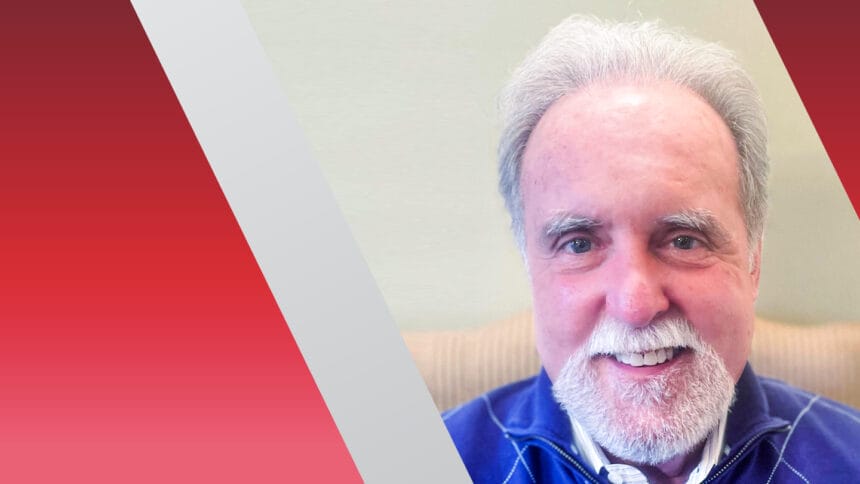
Robert Hurlbut is the third-generation family leader of an Western New York nursing home chain, who is transitioning his own son into a leadership role as the business approaches 100 years in operation.
Instead of celebrating, however, the president of Hurlbut Care Communities is fighting for the sector’s future as Gov. Kathy Hochul (D) threatens to cut Medicaid rates for a group of providers already losing an estimated $810 million annually.
Hurlbut (pictured) is part of the New York Providers Alliance, a group of nonprofits that has been pressing state lawmakers to tap the state’s “rainy day” fund to ensure an annual increase, which would be just the second one for the upstate region in the last 15 years.
The issue has united some strange bedfellows this budget season, with cost concerns leading to thousands of lost nursing home beds, significant hospital discharge delays and ongoing staffing shortages in long-term care.
Friday, elected officials from Western New York and Niagara County will stand alongside union leaders, hospital executives, and patient advocates and nursing staff in Buffalo to plead publicly for Hochul to reverse her stance.
State lawmakers also have come alongside providers to push back against Hochul’s proposal.
Statewide, providers claim they are underfunded by more than $1.6 billion, with an average loss for an upstate facility surpassing $2 million annually with the state’s high Medicaid population.
The governor initially proposed a $600 million, or 10%, cut for nursing homes. Any cut would be compounded by a rate freeze as the state transitions its state methodology to align with Medicare’s Patient Driven Payment Model.
“These cuts are a non-starter,” Hurlbut told McKnight’s Long-Term Care News last week. “She needs to wake up because the senior citizens in the state are not being treated well. Nursing homes, we’re losing on average about $95 to $99 [per-patient] a day and up in some cases. The question I ask a lot is, ‘Can you live on your salary from 15 years ago?’ And nobody has said yes.”
Cuts, freezes and rebasing delays
Hurlbut and his peers want to see a $510 million increase for nursing homes in the 2024 budget, which is due to be passed by April 1, followed by another $300 million increase in fiscal 2025. The coalition of nursing home owners is also seeking rebasing in 2025. The state has not rebased in 30 years, so estimated costs are based on 1990s data, Hurlbut added.
He says he is generally optimistic about an increase, even though last year’s 6% increase was the first in more than decade, unless one counts restoration of a 1% cut during the pandemic. Hurlbut has seen other states, including Texas and Pennsylvania, win significant increases recently after long dry spells thanks in part to a vocal and united healthcare industry.
And concerns are coalescing in his state.
“Western New York hospitals and nursing homes struggle with some of the lowest Medicaid rates in New York state that don’t even come close to covering the cost of care,” Todd Hobler, 1199SEIU executive vice president for Upstate/WNY, said Tuesday. “Governor Hochul’s budget not only fails to address this inequity but makes it worse by proposing cuts in healthcare funding. The governor needs to do better.”
The state has a budget gap of $4 billion but a healthy rainy day fund of $14 billion. The proposed Medicaid cuts would be used, Hurlbut said, at least in part, to shuffle more money into that fund as the state faces higher projected deficits in years ahead.
But others say it’s time the state tapped that fund on behalf of seniors who are losing access to care. Assemblywoman Donna Lupardo (D) said there have been 75 nursing home closures in the last 20 years, with 20 coming since 2019. Hurlbut said that equates to the loss of 5,600 nursing home beds, posing major challenges for those seeking quality care close to home.
“What’s a rainy day fund for?” he asked. “We’re past the rainy days. We’re in a hurricane.”
Fighting for survival
As a result of Medicaid underfunding, the SEIU reported that nearly two-thirds of New York hospitals are facing operating deficits, while 90% of nursing homes in Western New York have Medicaid reimbursement rates below the statewide average.
The financial hardship comes as New York’s nursing homes face enforcement of new staffing and spending requirements that have so far been upheld by courts. Hurlbut said he has spent countless hours responding to understaffing notices from the state, though fines of up to $2,000 daily have yet to be assessed.
“You can pass a hundred of these [laws]. It’s not going to make a difference,” Hurlbut said. “Before the pandemic, we were 45,000 healthcare workers short. And now after the pandemic, we’re 65,000 short.”
Nursing home providers say a $510 annual increase is needed not just to keep facilities open, but to address a 40% increase in labor costs and help them hire additional staff.
At stake, Hurlbut said, are the livelihoods of the many community businesses whose leaders have spent their own lives sacrificing for patients. He started working in senior care at 15, alongside his father, and he recently promoted his son to a corporate position so that he could take on more advocacy work.
“I love the elderly,” Hurlbut. “I’m trying to make this a better world not only for the senior citizens, but for my family, especially [my son] Robert to be able to take over our communities. I think he’ll run them as good, if not better than I will.”




